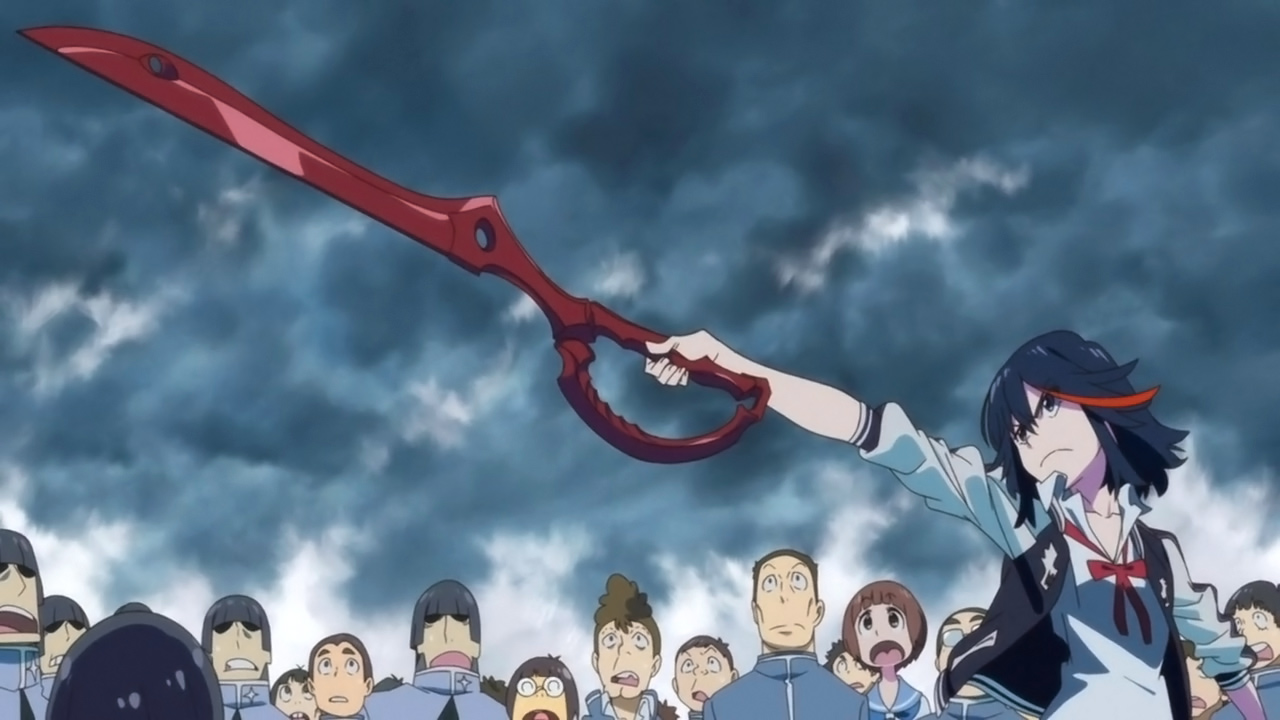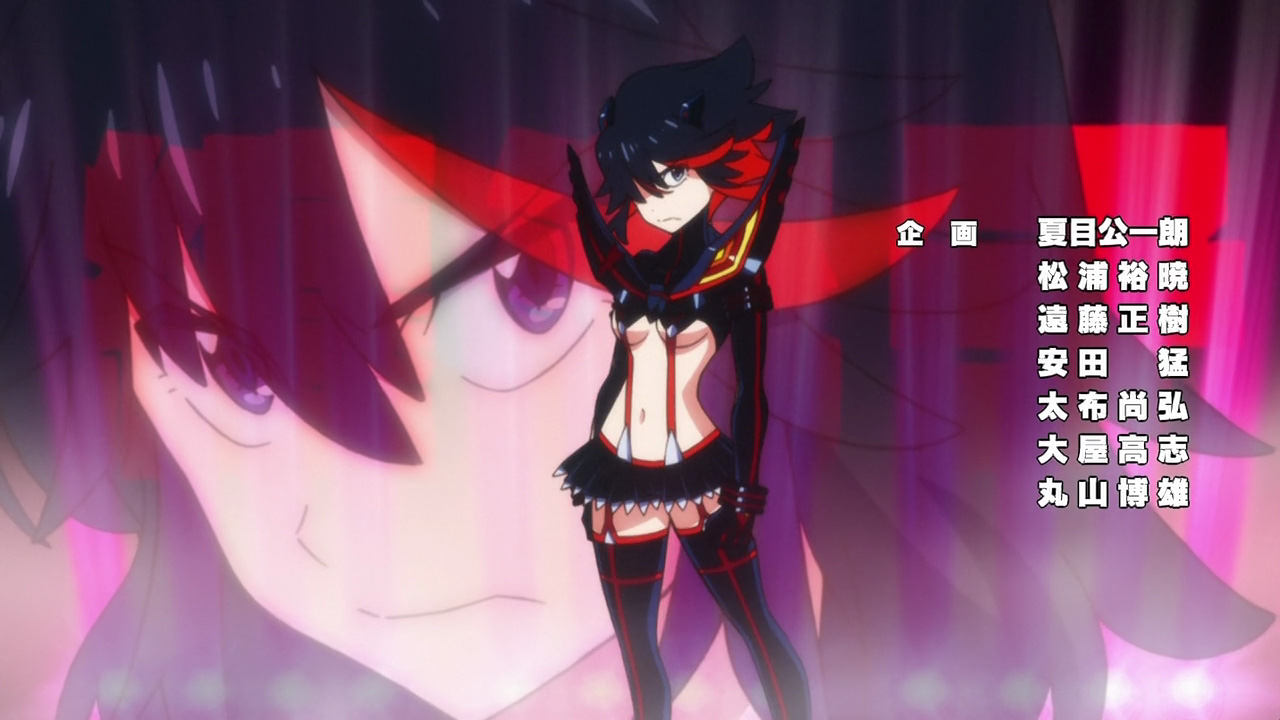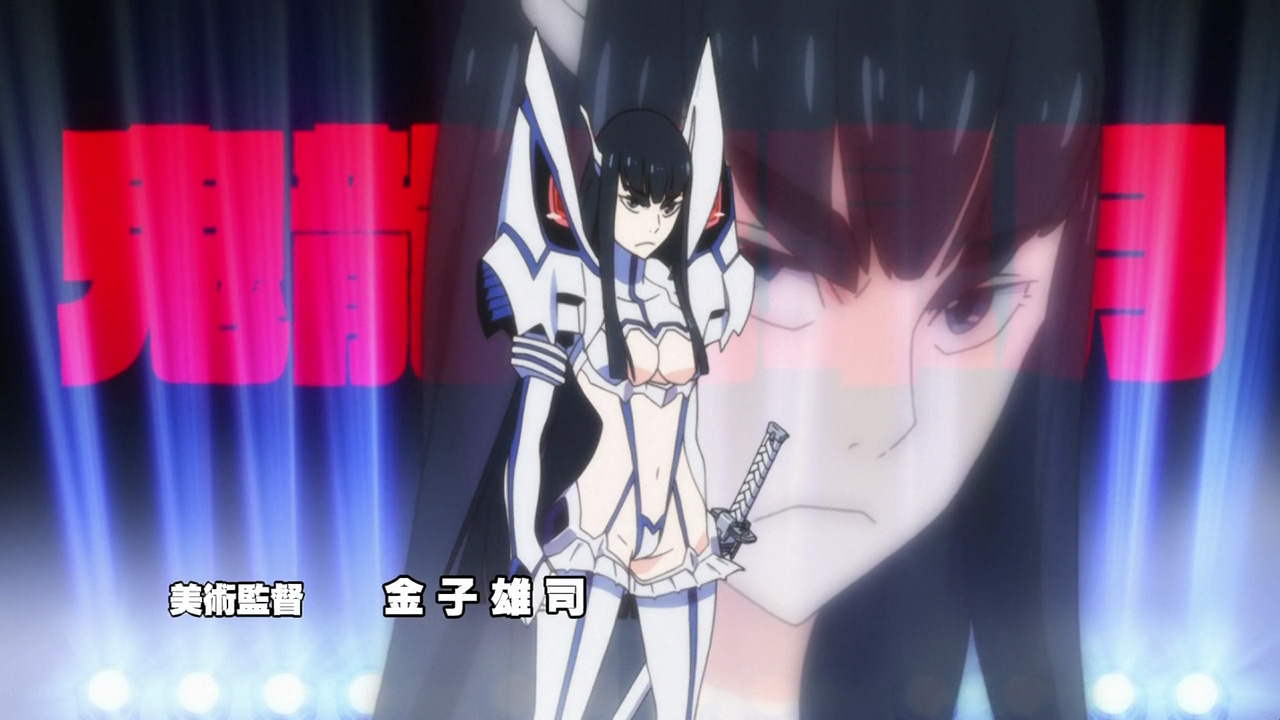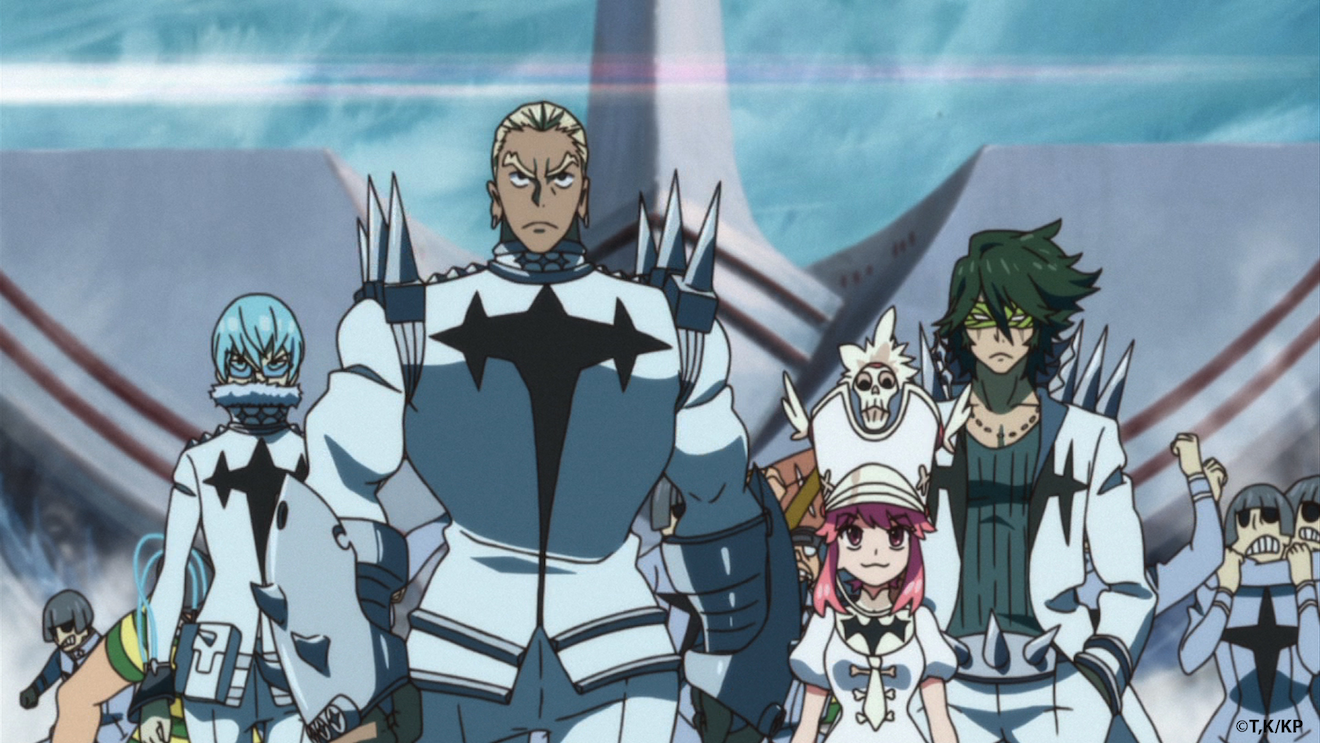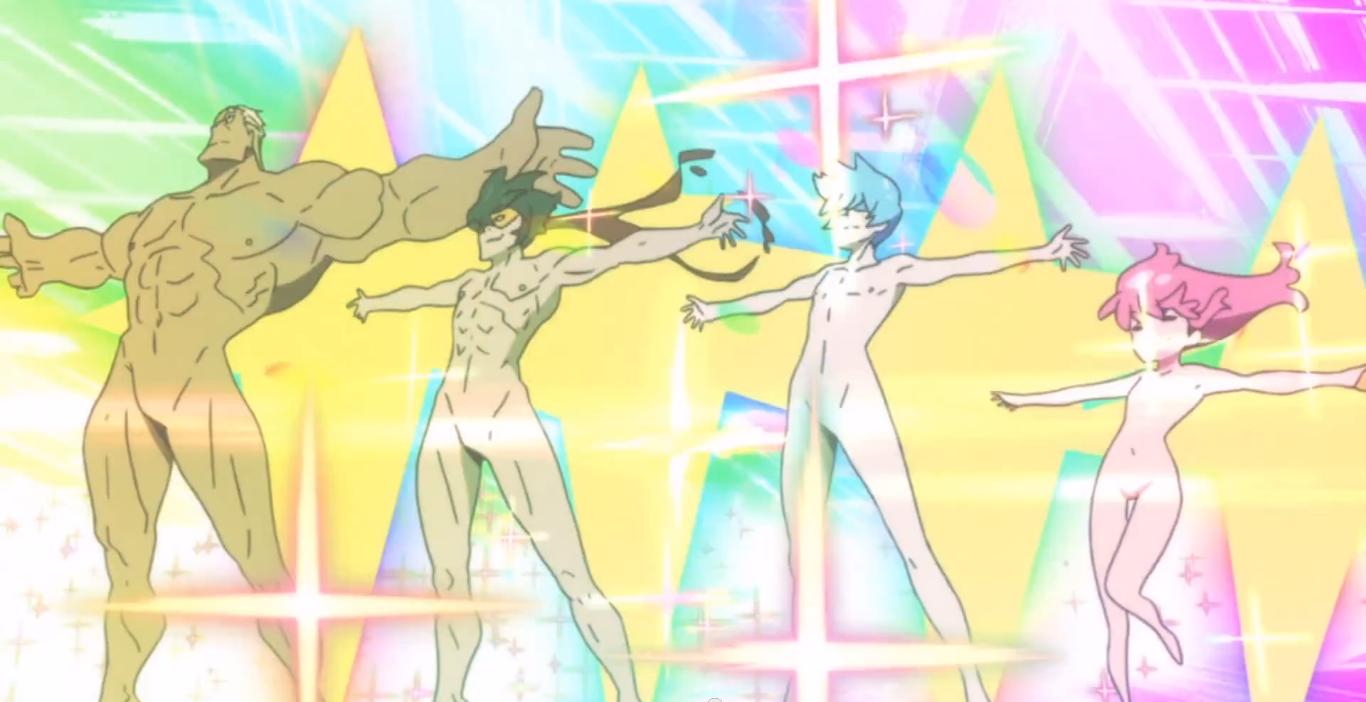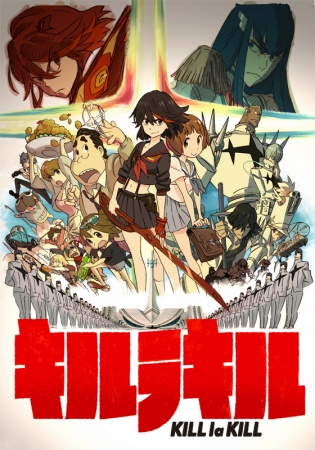
Another one of Studio Trigger’s successes is Kill la Kill which began its two cour run late in 2013, carrying over to early 2014. The series follows the story of Ryuuko Matoi, a spunky teenage girl who set out in search of her father’s killer. Wielding one half of her father’s ultimate creation, the scissor blade, she searches for the other half which was used in her father’s murder. During Ryuuko’s search for the second half of her father’s scissor blade, she comes across the famed Honnouji Academy. The school is known for its competition among students who strive to prove their worth to the student council president Kiryuuin Satsuki and her powerful companions, the Elite Four. This is done in the hopes of being granted more advanced Goku Uniforms which serve to enhance one’s strength by providing the wearer with special powers. With the help of her own specialized uniform, Senketsu, Ryuuko Matoi aims to take down the student council president and her Elite Four in the hopes of discovering the truth behind her father’s death and the other half of her scissor blade.
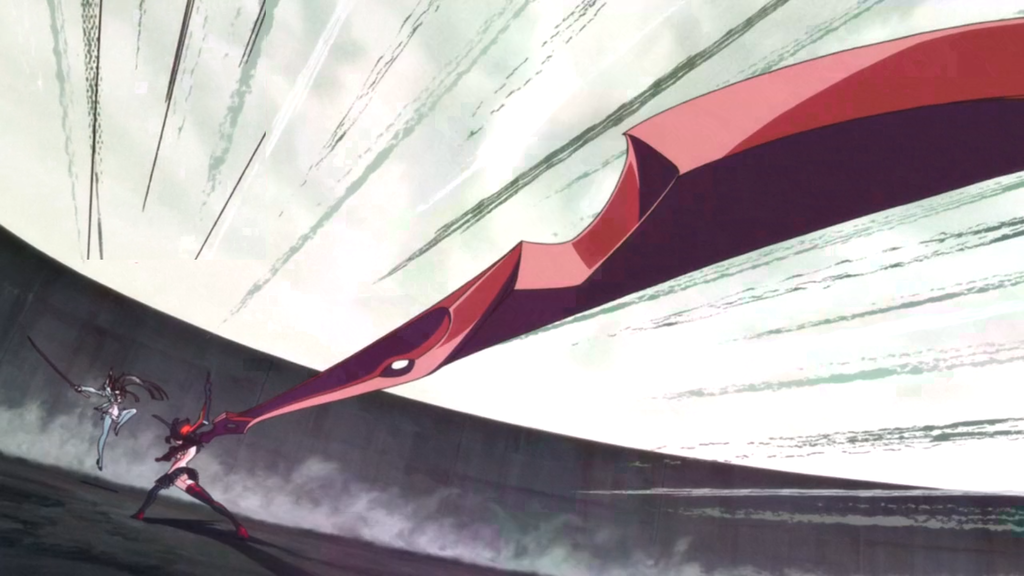
Taking a page out of Tengen Toppa Gurren Lagann’s book, Kill la Kill starts strong and never stops going. Being a product of the same studio as Gurren Lagann, it’s no surprise that the approach to plot development is similar in nature. With all the energy between the characters and the fast paced scenes with exaggerated animation, the anime has an almost magnetic property that really draws viewers in. Kill la Kill takes things a step further by utilizing clothes in a fresh way. While super powered clothing is not an entirely new idea in the realm of anime, Kill la Kill adds in a fun twist with its over the top designs that on many occasions, look impractical to wear. While these wardrobe designs tend to show more skin than is practical, the look somehow works, adding more personality to the anime. In fact, it’s these over the top designs that set Kill la Kill apart not just from anime in general but also from the products of Studio Trigger such as the aforementioned Gurren Lagann and the previously reviewed Kiznaiver.
What Kill la Kill does with its palette is consistent with the hallmark style of Studio Trigger. The choice of color in Kill la Kill is bright and vibrant with each character again being assigned a particular palette that matches well with their character. Ryuuko Matoi for instance has a consistent color palette of black and red with both her scissor blade and Senketsu being predominantly made up of those colors. The color scheme used for her is consistent with her character, a rebellious student seeking to overthrow the student council and the long standing system of Honnouji Academy. As a foil to the Ryuuko and her darker color scheme, Kiryuuin Satsuki’s palette consists of white and blue which reflect a sense of cleanliness and purity in line with her desire to preserve the existing system and rid the school of rebellion.
The power creep of the series is actually very well designed despite following the shounen trademark that has the protagonist becoming much stronger than the supporting cast. In the world of Kill la Kill, Senketsu gains more power by taking in the special threads that give Goku Uniforms their unique properties. It’s this set up that makes the power creep believable. With Ryuuko Matoi defeating so many of Honnouji Academy’s students, it would make sense that Senketsu gains immense power as the show progresses.
Simply put, Kill la Kill is explosive in energy and hype. It takes the usual plot and adds in its own unique elements and designs that truly make it stand out. Instead of being serious in nature, the series gives of an impression of literally just having fun while making anime, a feat which Studio Trigger managed to show in the past through Gurren Lagann. Overall, the series is an easy binge watch despite its two cour run owing mostly to its over-the-top designs and its fun approach to storytelling.
Incidentally I was able to meet Studio TRIGGER at Anime Midwest and get their autographs, which was an awesome experience!
